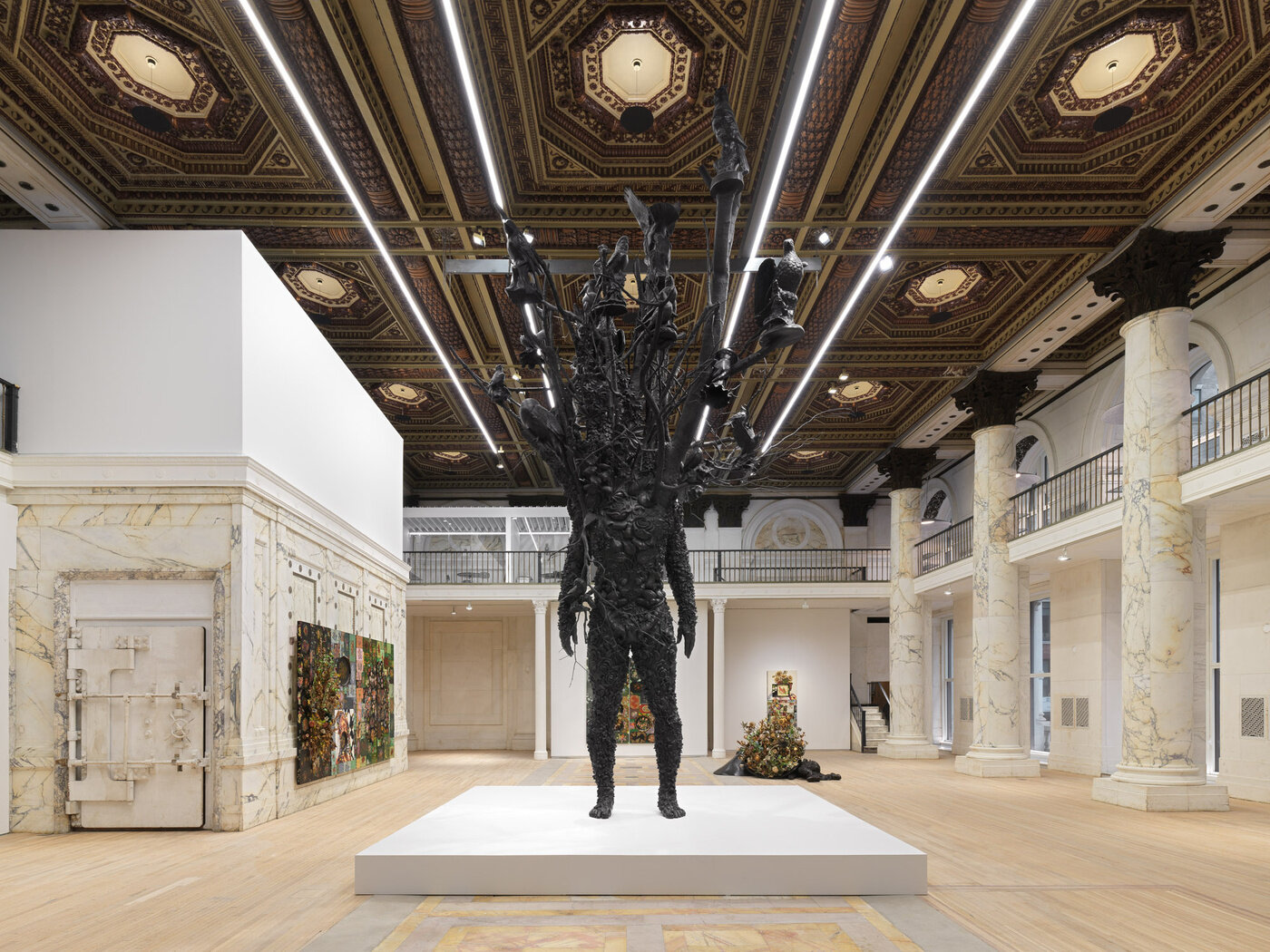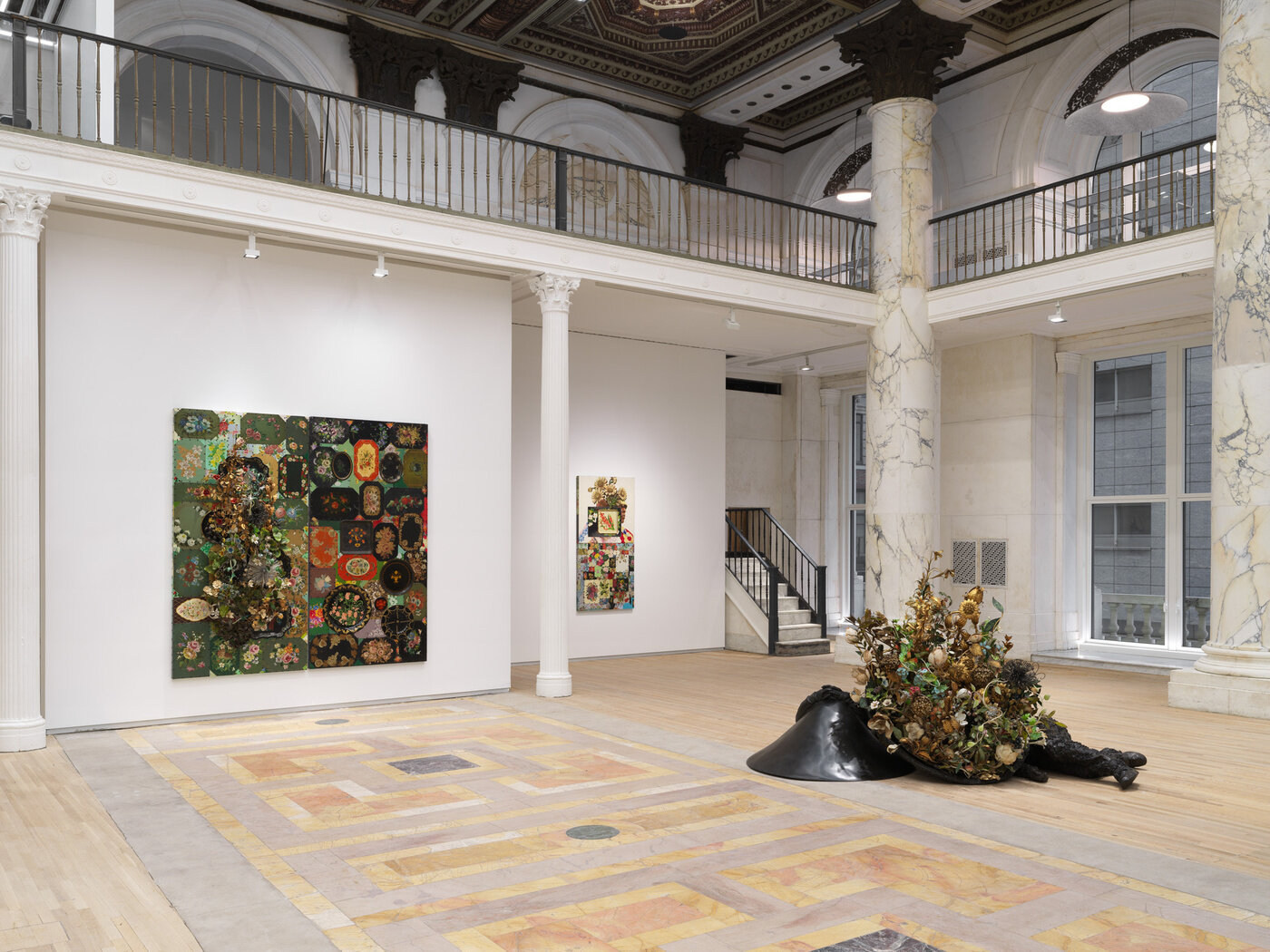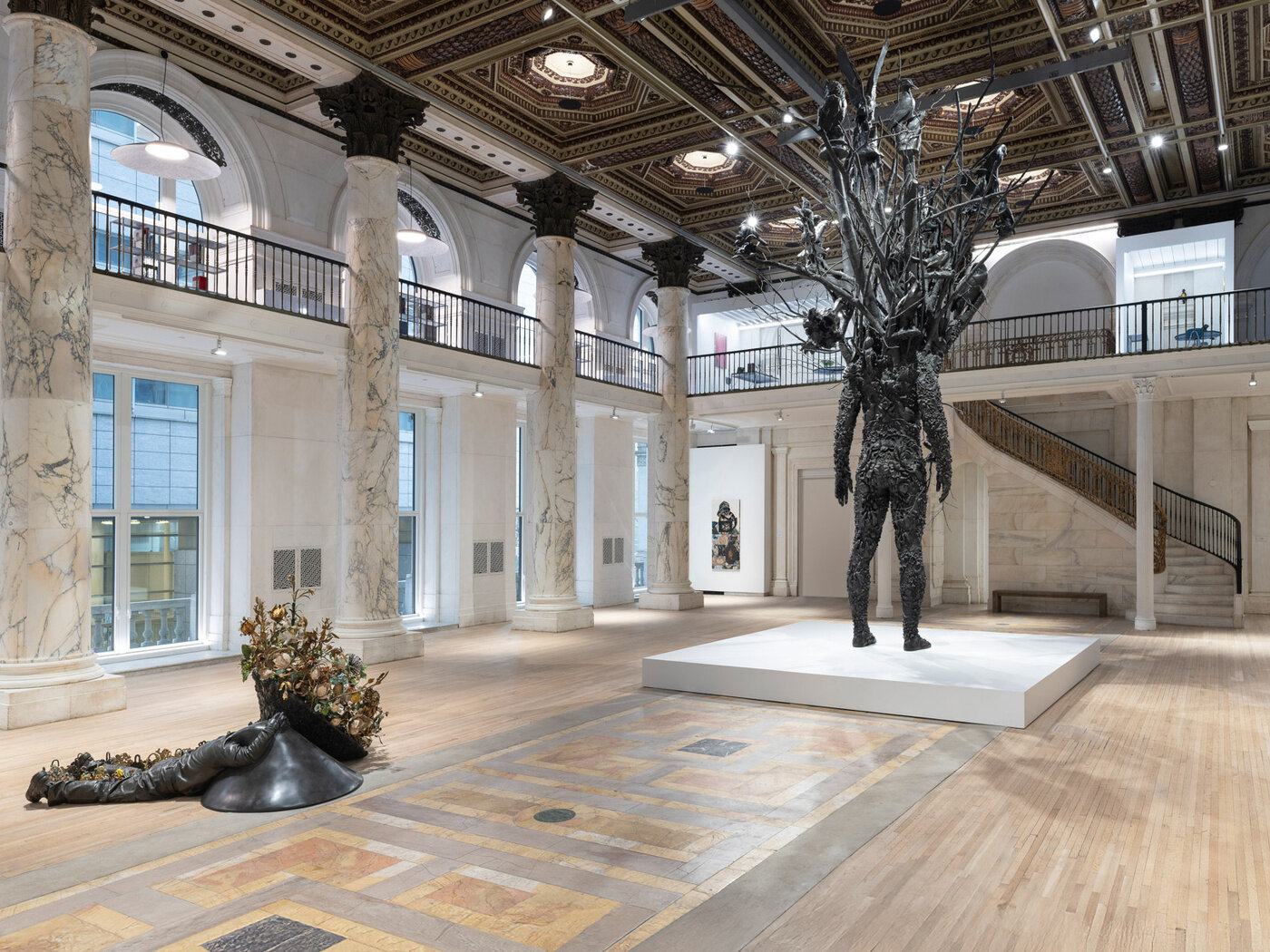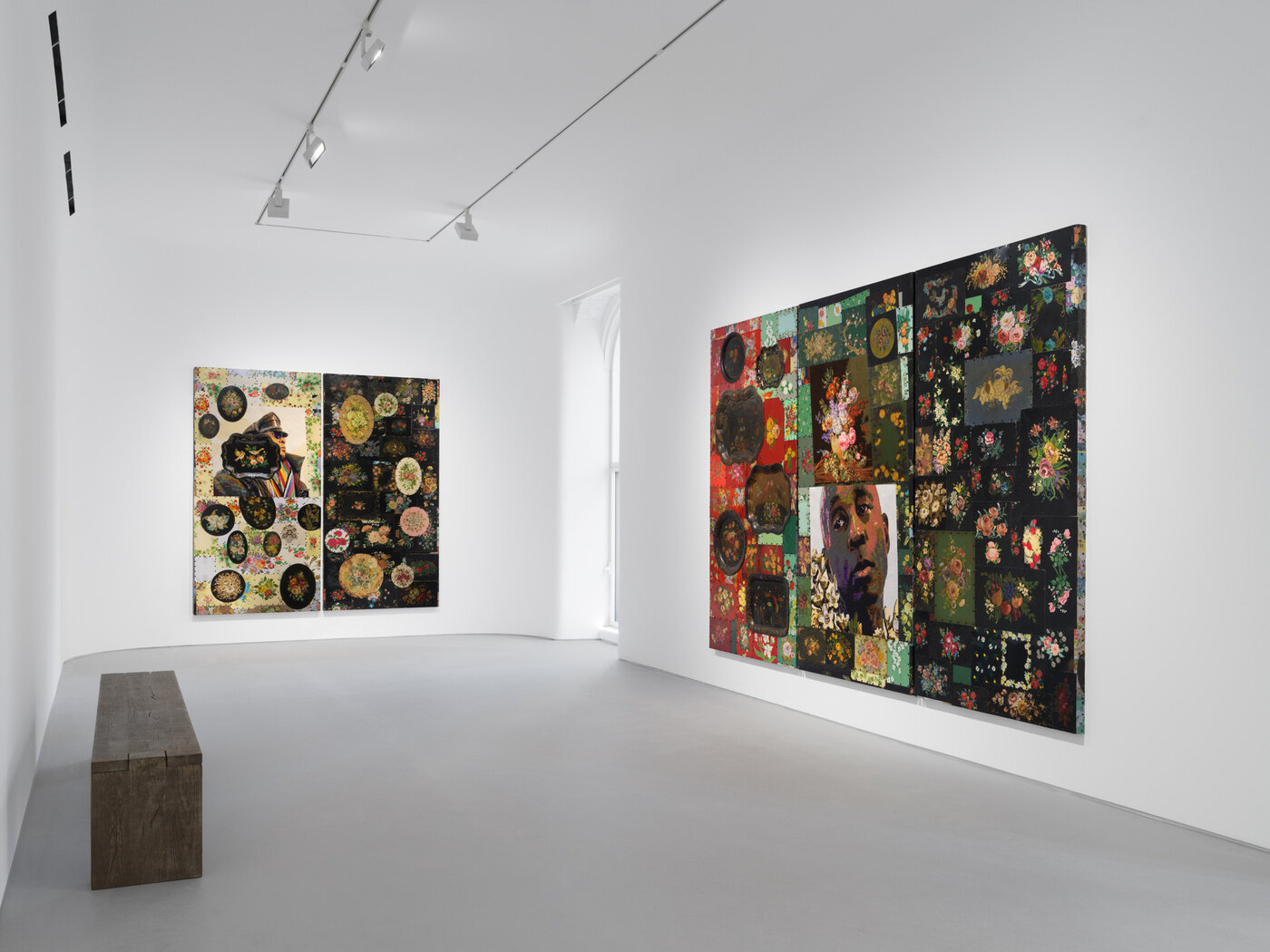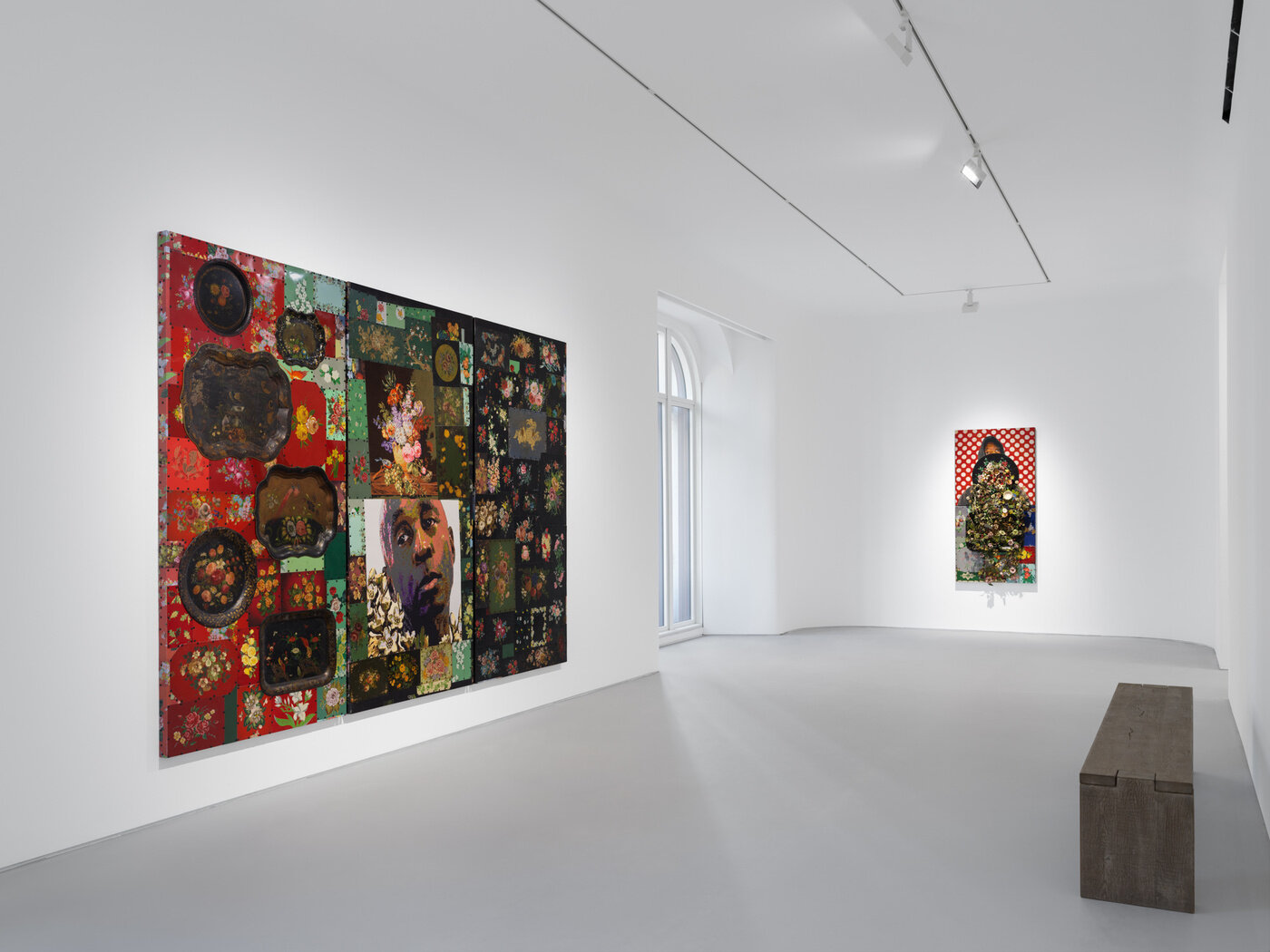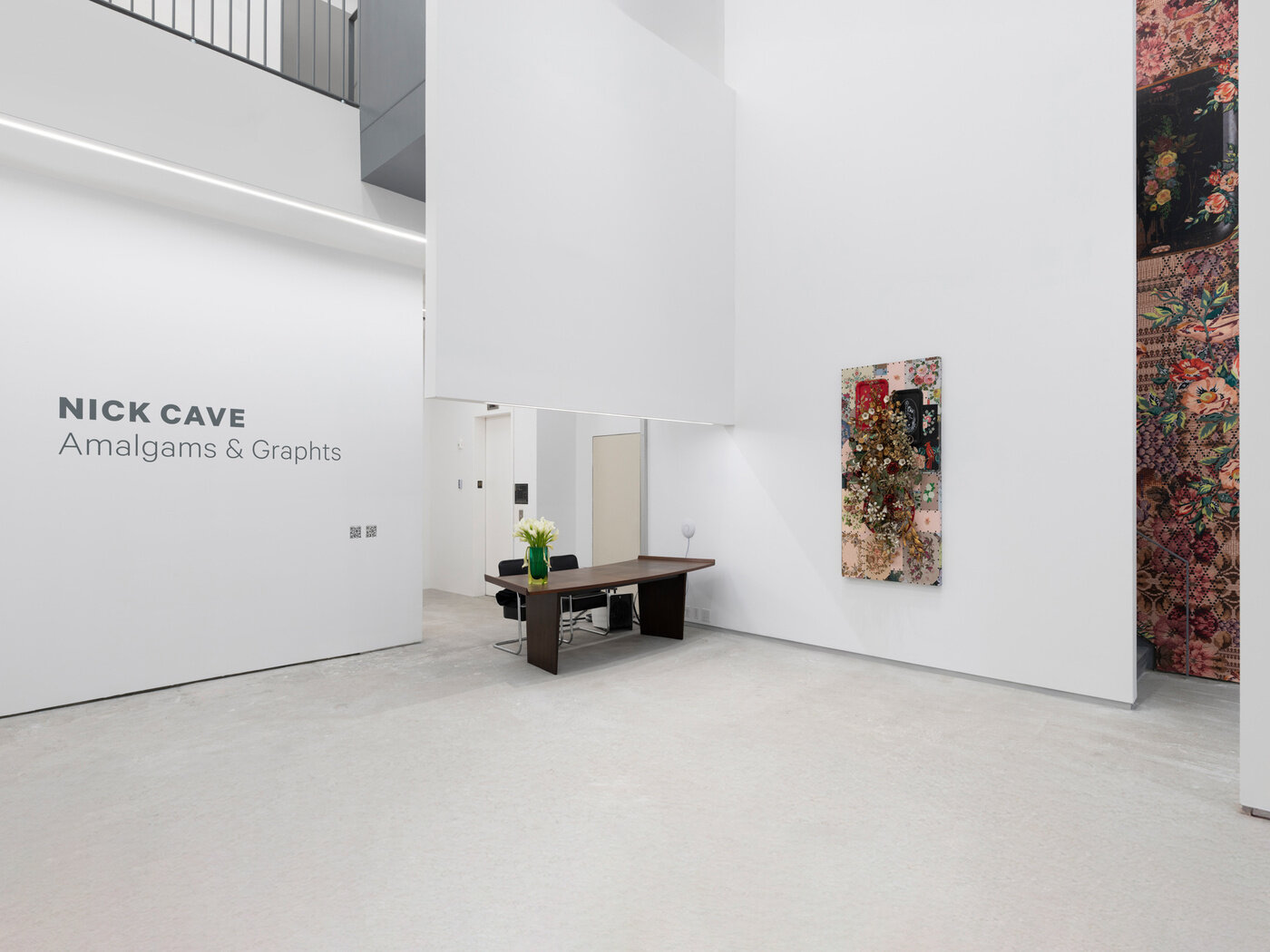Nick Cave: Amalgams and Graphts
Works (Tap to zoom)
Press Release
NICK CAVE
Amalgams and Graphts
46 Lafayette Street, New York, NY
January 10 – March 29, 2025
Opening reception Friday, January 10 from 6–8PM
PRESS
Jack Shainman Gallery is pleased to present Amalgams and Graphts, an exhibition of new work by Nick Cave. Marking the inaugural presentation at Jack Shainman Gallery’s flagship Tribeca location, Cave introduces two distinct series that push his singular style and vision to an epic realm, while maintaining an intimate and personal conversation with his audience.
Anchoring the exhibition is a series of three large bronze sculptures, titled Amalgams. These contemporary monuments create a positive, inclusive and resilient alternative to the plethora of public art that has often misrepresented history, silenced diverse voices and commemorated war and conquest. The Amalgams are an evolution of Cave’s iconic Soundsuits, which were created in response to the brutal beating of Rodney King by police in 1991. They concealed race, gender and class to force the viewer to engage without preconceived judgment. In the new Amalgams Cave fuses casts from his own body with natural forms such as flowers, birds and trees with similar effect.
At nearly twenty-six feet tall, Amalgam (Origin) grounds viewers with a connection to humanity but quickly lifts them to a place of awe or spirituality. Intricate and ornate designs cover and connect the figure to a place where we might expect to see a face. Instead, Cave has rendered a complex migration hub through a flourishing of branches and birds of all types, poetically gesturing to nature’s sense of evolution and possibility. Nearby, Amalgam (Plot) shows two bronze figures lying side by side recalling a still from video footage portraying the ongoing racially motivated violence cast onto Black bodies. One figure faces up toward the sky and the second face down with hands behind its head, taking cover. The figure lying face up seems to grow an oversized garden plot bursting with vintage tole florals in place of its visage. In this context, the garden becomes both a memorial and a symbol of resistance and renewal. In a gallery around the corner, on Broadway, a third Amalgam is seated against a bespoke wall work, visible at all times to New York City passersby. Together, the Amalgams are embodiments of growth and resistance in the face of oppressive structures. They continue the propulsion within Cave’s practice towards public engagement and the civic and social responsibility of artwork.
Debuting alongside these bronze figures is Cave’s newest series, Graphts. These mixed media assemblages situate needlepoint portraits of the artist amongst fields of florals and color constructed from vintage serving trays. While Cave has often used his own body within his artwork, this is the first time that he has revealed a recognizable self.
Cave’s choice of materials creates an interplay of double meanings. The needlepoint is associated with upper class gentility and was a common way to pass the time in these households. Conversely, the patchwork of serving trays evoke quilting traditions prevalent in the Black community, a form of creativity born out of necessity. The vintage trays themselves are embellished implements of servitude that ask us to consider the role that aesthetics have historically played in concealing and perpetuating hierarchies. An additional layer of meaning is introduced by the phrase “to serve,” which in ballroom culture is a directive to act with confidence and attitude.
Cave brings these registers of meaning together around self-portraiture, itself an inquiry into how each individual is formed amidst so many references and influences. Cave invites viewers to reflect on the formation of their own selves, including their complicities, biases and associations, and to share that experience with others. Cave’s Graphts function as sites for collective introspection reminding the viewer of beauty’s frequent proximity to sinister forces and systems, and of our own positions within them.
Together, the Amalgams and Graphts investigate how we portray race, class and power, as well as how these larger institutional systems shape our identities. They are both deeply personal and universal, allowing viewers many entry points into a reflective experience.
Nick Cave has been the subject of numerous exhibitions. Most recently, in 2022 the Museum of Contemporary Art, Chicago organized a retrospective of his work that traveled to the Solomon R. Guggenheim Museum, New York. In 2025 Cave will debut a new body of work including a performance at the Smithsonian American Art Museum, Washington, D.C. that will be accompanied by a monograph. His bronze sculptures have already begun to be disseminated to public spaces. After his exhibition at Jack Shainman Gallery concludes, the first edition of Amalgam (Origin) will join the prestigious permanent collection of Frederik Meijer Gardens & Sculpture Park in Grand Rapids, MI. No stranger to public projects, Cave’s work is on permanent view at the 42nd Street Times Square subway station, and his commission at the Princeton University Art Museum, which will incorporate one of his iconic Soundsuits into a largescale mosaic of glass, wood and metal, will open in 2025.
This will be the first exhibition housed in the gallery’s new Tribeca location since renovation has been completed. Situated in a multi-story 20,000 square-foot space in the Clock Tower Building at 46 Lafayette Street, this historic space was originally completed around 1898 by the architecture firm McKim, Mead & White and is in the U.S. National Register of Historic Places. Originally the home of the New York Life Insurance Company, now a poignant historical example of American capital and consumerism, the building’s transformation will allow it to assume a contemporary context as it is put in dialogue with 21st century art and ideas. The primary exhibition space will be located in its massive Beaux-Arts bank hall with original features such as ornate, coffered 29-foot ceilings, sweeping staircases and a wall of arched windows being retained. The scale of the building is in keeping with Jack Shainman Gallery’s desire to have venues where it can mount large exhibitions to match the ambitions of its artists. With the opening of this new exhibition space in the heart of Tribeca, the gallery continues to fulfill that desire while ushering in a new chapter in its long history of platforming the prescient and groundbreaking work of the artists they represent.
